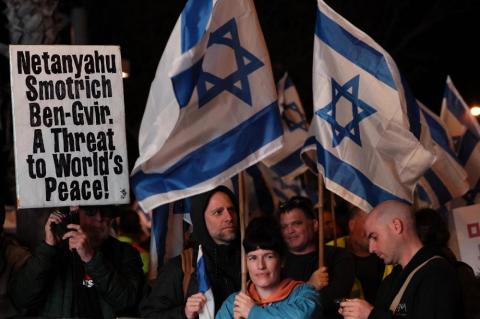
DUBAI: Protests against the regime in Tehran spread on Monday to Iran’s vital energy industry, threatening the long-term survival of the country’s clerical rulers.
Workers at Abadan and Kangan oil refineries and the Bushehr petrochemical plant joined in the demonstrations that have been sweeping Iran. Video footage online showed dozens of workers blocking the road to the Bushehr plant in Assaluyeh on the Gulf coast, chanting “Death to the dictator.”
The protests began more than three weeks ago after the death in morality police custody of Mahsa Amini, 22, from Iran’s Kurdistan province, who was detained and beaten for wearing her hijab “in an insufficiently modest manner.”
Demonstrations have been led until now by young women and university students, but analysts said support from energy industry workers was an ominous sign for Iran’s ruling mullahs.
Combined with US sanctions on Iran’s oil exports, sustained strikes by energy workers could bring the Islamic Republic to its knees, said Karim Sadjadpour, an analyst at the Carnegie Endowment for International Peace.“Iran is less dependent on oil as a percentage of GDP than they were in 1978, but energy exports are still the lifeblood of the economy,” he said.
Iranian security forces continued on Monday to crack down on the protests.
Rights groups say at least 185 people, including 19 children, have been killed, hundreds injured and thousands arrested.
Video footage on social media showed protests in dozens of cities across Iran on Monday, with fierce clashes between protesters and riot police in Kurdistan province, where at least five people were killed and over 150 injured in protests since Saturday.
There was a heavy presence of armed security forces in the Kurdish cities of Sanandaj, Saqez and Divandareh, using tear gas, clubs, and, in many cases, live ammunition.
One video showed several explosions creating blinding flashes in a neighbourhood of Sanandaj, the capital of Kurdistan.












